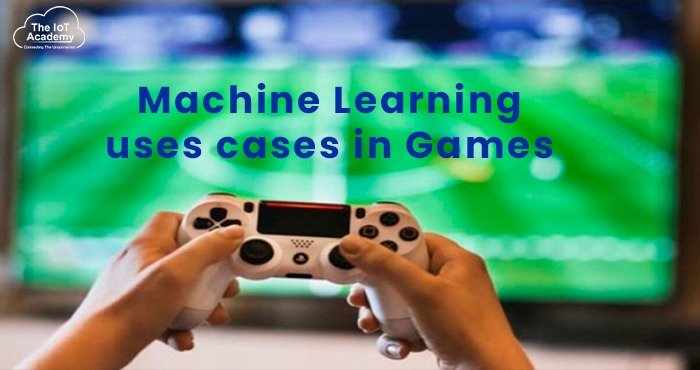Among the data science applications, Machine learning is transforming practically every industry, from agriculture to cancer diagnosis in veterinary medicine. It has revolutionised the way traditional businesses work and accelerated their growth. Machine learning algorithms along with Machine Learning gaming projects have recently been used in the gaming industry to generate more engaging video games. Machine Learning is used in the production of high-speed games.
It’s a powerful tool for game designers to create a variety of realistic settings, intriguing challenges, and unique content. Regrettably, the use of Machine Learning in gaming creation is still in its infancy, and it has yet to make headlines in the same way. We’ll look at how machine learning has transformed computer game production in a variety of ways.

Here’s a rundown of the most cost-effective and widely utilised machine learning games examples.
- Modelling Advance System
The capacity of a machine-learning algorithm to simulate complex systems is one of its strongest features. Game developers are working nonstop to make games that are more immersive and lifelike. Modeling the real world is difficult, but ML algorithms will make it easier to create complicated models that players will be unable to manage.
- Realistic Connections
One of the most difficult aspects of game creation is creating a realistic virtual world in which players can interact with NPCs. Users can speak aloud to in-game characters and receive real responses if NLP is used. It’ll be as if players are talking to Siri, Alexa, or Google Assistant.
- Dynamic audio edits
Some aspects of the game development outline may be unusually long and difficult to change once produced. Additionally, machine learning-assisted speech creation will make it easier to patch updated audio to allow script modifications or insert the player’s name into the pre-recorded conversation. In the long run, AI voice actors will be able to take the position of real-life actors.
- Personalized user content
Machine learning technologies open exciting possibilities for developing systems that will be utilized directly by users to obtain content that is consistent with the game’s design. They provide players the option of requesting photos of themselves and having them included in the games based on their likeness.
- ML algorithms participate as NPCs
Currently, in a video game, opponents are pre-scripted NPCs (non-playable characters), but a machine learning NPC will let users play against fewer predictable rivals, making the game significantly more engaging. Early machine learning applications in NPCs are already being worked on by businesses. The algorithms will train NPC players faster than traditional reinforcement coaching.
- Creation of a dynamic universe
Several most popular video games in the industry are open-world games that allow players to interact with their environment. However, creating an effective interface takes a lot of time and involves a lot of repetitive and unneeded work. This time-consuming system has become more cost-effective after the installation of ML allowing the developers to devote more time for creative endeavours.
- More engaging mobile games
Mobile games account for half of the money earned by video games. Because of the hardware limitations of smartphones, the capacity of those games is limited. However, as AI and ML integrated processors have become more common in cell phones, this scenario has begun to change.
- Can adjust the severity of the problems based on the preferences of the players
Player-experience modelling, which is giving personalised experiences to players according to their expertise level, is another benefit of the Machine Learning gaming projects. Thus, if the player is a beginner, the ML algorithm can reduce the difficulty level to basic mode to keep the user from becoming frustrated.
- Assisted design generation
Games typically have many objects that are all created in the same way. Using ML approaches, artists will be able to streamline processes so that they can spend more time on the artistic aspects of their work and less time on the technical aspects.
- Improving developer skills
To meet the increased need in the industry, traditional video game developers will improve their ML techniques. Machine learning is one of the technologies and innovations that is taking over the gaming development industry. As a result, game creators will practice each to become more cost-effective.
Conclusion
Today, the gaming industry is booming. With over two billion gamers worldwide, the global gaming business is a huge source of money, and these revenues are projected to continue to rise.
The amount of knowledge to be processed is expanding as the number of users grows. The number of times users spend enjoying themselves, interacting with others, quitting for a specific reason, peaks in activity, outcomes, and scores, among other things, provide a wealth of data for analytics.
Specialists are looking for new methods to apply Machine Learning and its edges in the gaming business as they gain a better awareness of the value of data for optimization and improvement. As a result, we can see several unique ML use cases appear.









